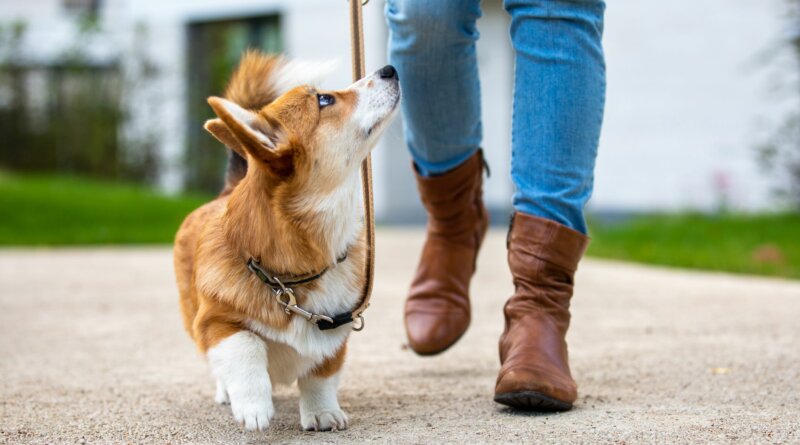My Dog Doesn’t Want to Walk
If your dog won’t walk on a leash, look at the situation from the dog’s view. Why aren’t walks fun for him?
Start by ruling out physical problems. Are his nails too long? He could have irritated skin between his toes, sore muscles, or arthritis pain that makes walking uncomfortable. If you’re not sure, get a veterinary checkup. If your dog is a senior with arthritis, pain medication might be in order; ask your vet about this.
Check the fit of his harness – or, better yet, try a different one, or use only his flat collar.
Be sure where you’re walking is comfortable for him – no hot pavement, prickly grass, difficult hills. If it’s cold out, are his paws too cold? Some dogs literally sit on their hindquarters in an attempt to get all four feet off of the ground. Others limp.
Make Walking Fun
To increase your dog’s enthusiasm for walking, remember that:
- A walk must include time for sniffing. The term “sniffari” is often used to describe a dog checking out scents. Some experts say sniffing is like reading the newspaper, so let your dog get the news! Remember, this is his walk!
- If you walk with a friend, don’t neglect your dog. Give your dog attention. Avoid talking on your phone or being otherwise distracted.
- Don’t pressure your dog to walk faster than he can. Older dogs, little dogs, and dogs with physical problems will walk slower than you do. The leash should always be loose on your walks.
- Don’t force him to walk in areas that make him nervous. If smells and sounds from the zoo make him nervous, stay away from the zoo. Walk where he’s comfortable; go in a new direction or drive to a new area a mile or two away. Use treats and praise to encourage him, and never use force or drag your dog along.
- If your dog won’t take even very high-value treats on your walks, it’s a sign that he is highly stressed.
Treats for Walking
Now, let’s rev up his enthusiasm for the leash and for walks.
Pick up the leash, say “Leash!” and put it on him. Immediately give him a treat. Then, ask him to walk with you around your house or yard, using a new cue (one that hasn’t been used before). You can say, “Walk” or “OK” or “Let’s go!” It doesn’t matter. What does matter is that you say it in a fun, upbeat, happy tone and, as soon as he takes one step with you, reward him. Reward him frequently. Keep sessions no more than three to five minutes long. At this point, you may notice he walks along frequently looking up at you.
When you think he’s ready, go somewhere new for a very short walk. Give him lots of treats along the way. If you think something ahead might bother him, use a very high rate of reinforcement (treats and praise) as you approach and move past the obstacle. Eventually, he’ll look at you for a treat when approaching something he’s concerned about.
Gradually lengthen the walks, but if your dog becomes reluctant again, and his health and equipment issues have already been addressed, reduce the length of your treks and respect his limits! Not all dogs need to walk far for their health or happiness.



